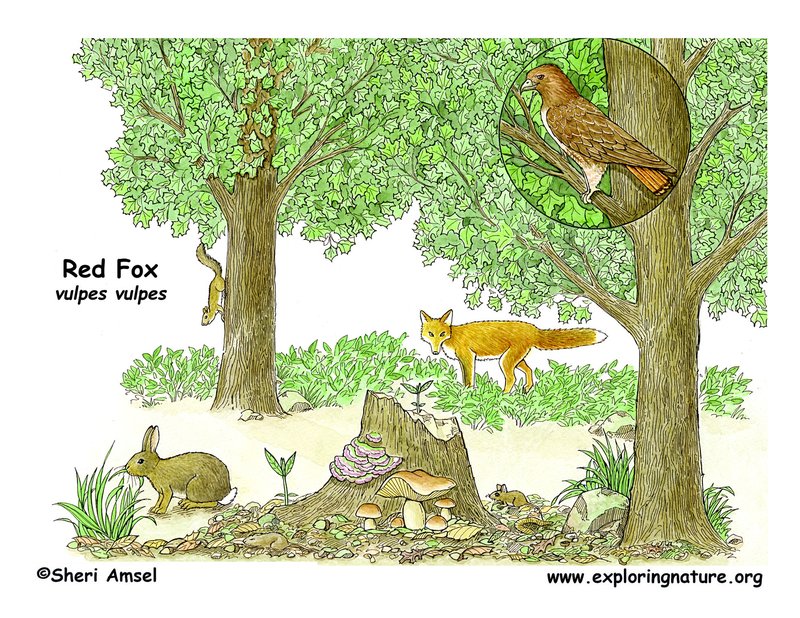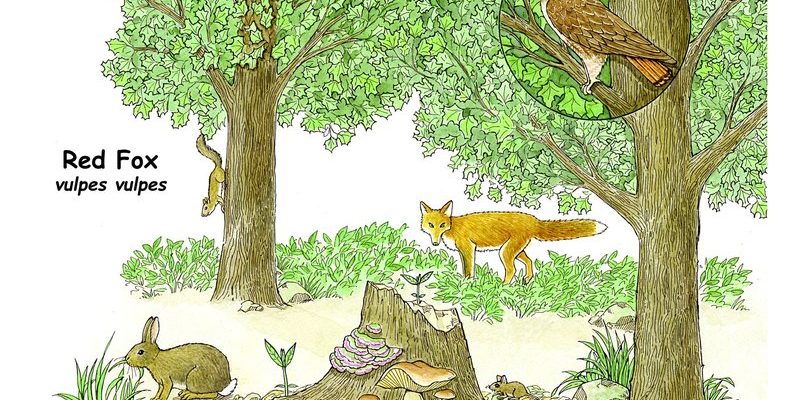
Imagine a bustling neighborhood where everyone has a job to do. Just like this neighborhood, an ecosystem functions smoothly when each species contributes to the community. The red fox symbolizes adaptability and resourcefulness, thriving in diverse environments like forests, grasslands, and even urban areas. This clever animal is not only essential for its habitat’s balance but also serves as a fascinating subject for nature enthusiasts and wildlife researchers alike.
What Makes the Red Fox Unique?
To appreciate the red fox’s role, it’s helpful to understand what sets it apart from other animals. First off, the red fox is known for its striking reddish-brown fur, bushy tail, and those keen, bright eyes that seem to observe everything. But there’s more than just good looks at play here. These foxes are incredibly versatile and can thrive in various habitats, from woodlands to deserts and even the edges of urban areas.
Their diet is another fascinating aspect. Red foxes are omnivores, which means they eat a wide range of foods. They feast on small mammals, birds, insects, fruits, and even leftovers from human activities. This adaptability in diet allows them to fill a variety of ecological niches and helps them flourish in changing environments. When food is abundant, their population can grow, leading to an interesting ripple effect throughout their ecosystem.
The Red Fox as a Predator
Now, let’s talk about the red fox’s role as a predator. These crafty creatures often hunt small mammals such as rabbits, rodents, and birds. Here’s the thing: by keeping these populations in check, red foxes help maintain a balance in their ecosystem. If foxes didn’t control these populations, many factors could lead to overpopulation, which would result in the depletion of vegetation and potentially collapse the ecosystem.
Being a predator is not just about survival; it also influences other species’ behaviors. Just like a teacher guiding students, red foxes help keep prey species alert and cautious. Prey animals become more adept at survival when they have to avoid a sneaky red fox. This dynamic helps maintain a healthy variety of species within the ecosystem.
Red Foxes and Scavenging
You might be wondering, what else do red foxes do apart from hunting? Well, they’re also excellent scavengers! When they find a carcass or leftover food, they don’t hesitate to take advantage of the situation. This behavior is vital for the ecosystem because it helps recycle nutrients back into the soil and supports the growth of plants.
By scavenging, red foxes can help control disease spread among animal populations. They consume carrion, which reduces the number of decomposing bodies that could otherwise attract pests or spread illness. This process is a fantastic example of how interconnected our ecosystems are—one species’ feeding habits can lead to healthier surroundings for everyone.
Symbiotic Relationships with Other Species
The red fox also plays an essential role in fostering symbiotic relationships within its ecosystem. For example, when foxes hunt smaller prey, they inadvertently provide food for larger predators, such as eagles or hawks, who might feast on the remains. This interconnectedness keeps the food web intact.
Additionally, foxes can affect animal populations that compete for similar resources. By hunting certain prey, they allow other species, like hawks, to thrive as they depend on the same food sources. The red fox becomes a link in a chain that helps maintain biodiversity in the ecosystem.
Impact on Vegetation
It’s fascinating to see how red foxes influence vegetation too! When foxes create dens or burrows, they disturb the soil and promote new plant growth. The nutrients from their waste also enrich the soil, encouraging healthier ecosystems.
Also, as foxes help regulate herbivore populations, they indirectly affect the growth of plants. If there are too many herbivores munching away, the plants may struggle to survive. By keeping those herbivore numbers in check, red foxes help maintain a healthy balance between plant life and animal populations.
Challenges Faced by Red Foxes
Despite their adaptability, red foxes face numerous challenges today. Urbanization poses a significant threat as it invades their natural habitats. With more roads, buildings, and human activity, red foxes may find their food sources dwindling or their dens disturbed.
Additionally, hunting and trapping can dramatically affect their populations. The loss of foxes can lead to overpopulation of their prey, which can disrupt the entire ecosystem they help sustain. Conservation efforts are essential to ensure that this clever animal continues to thrive and perform its vital role in the environment.
Final Thoughts on the Red Fox’s Importance
In conclusion, the red fox is more than just an adorable creature that captures our attention. It’s a critical player in its ecosystem, influencing everything from food chains to plant health. By understanding the role of the red fox, we can better appreciate the intricate connections that sustain our natural world.
So the next time you spot a red fox darting through the woods or even in your backyard, take a moment to recognize the importance of this fascinating animal. From its hunting prowess to its scavenging habits, the red fox is a true ambassador of balance in the ecosystem. Let’s do our part to protect their habitats and ensure they can continue their essential work for generations to come.

